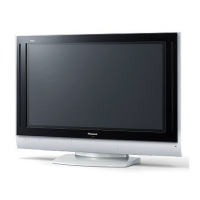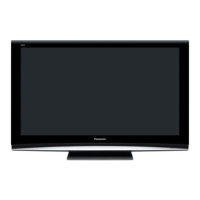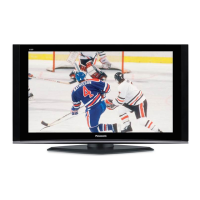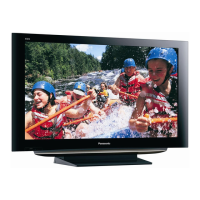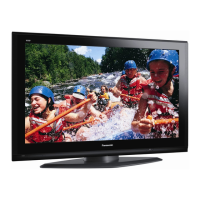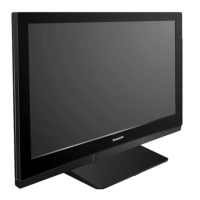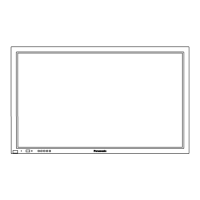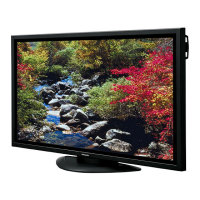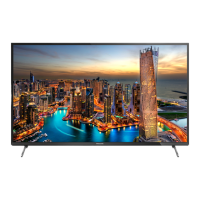Do you have a question about the Panasonic TH-50AS700A and is the answer not in the manual?
Explains "my Home Screen" as a gateway to TV, applications, and features.
Guides on displaying and navigating the Home Screen for features and full-screen TV.
Details on customizing Home Screen, including selection and face/voice recognition.
Explains APPS List as a way to access applications like Media Player.
Guides on accessing special features and applications from the APPS List.
Instructions for connecting the aerial for basic TV viewing.
Methods for selecting TV channels using different controls and lists.
Explains the information banner and its displayed elements and symbols.
Recommendations for connecting various external equipment to the TV.
Explains HDMI technology and its benefits for high-definition AV.
Table of compatible COMPONENT and HDMI signal formats.
Selects preferred picture modes (Dynamic, Normal, Cinema, etc.).
Adjusts picture elements like backlight, contrast, brightness, and sharpness.
Reduces unwanted picture noise and flicker using Noise Reduction and MPEG Remaster.
Selects favourite sound modes (Standard, Music, Ambience, User) for each input.
Adjusts audio levels for Bass, Treble, Equaliser, Balance, Surround, Bass Boost.
Adjusts TV speaker, auto gain control, volume correction, and speaker distance.
Enjoying 3D images by wearing 3D eyewear.
Changing viewing mode between 2D and 3D, and manual format selection.
Configures 3D detection, signal messages, depth, and adjustment.
Creates and manages lists of favorite TV channels.
How to skip or reveal unwanted channels.
Automatically searches for receivable channels.
Preparations for connecting and using a USB HDD for recording.
Records the current program to USB HDD immediately.
Technical details about USB HDD capacity, connection, and compatibility.
Overview of enjoying photos, videos, and music from various sources.
Lists supported photo formats and specifications.
Lists supported video formats and codecs.
Accessing websites and internet content via the APPS List.
Explains DLNA Certified technology for home networks.
Requirements and methods for connecting to the internet (wireless/wired).
Guides for setting up network connections (Quick setup - Wireless/Wired).
Setting user profiles for personalized content, home screen, and cloud services.
Preparations and settings for using voice control.
Overview of the Touch Pad Controller's design and functionality.
Overview of VIERA Link's HDMI interoperability and benefits.
Controls functions of connected equipment via TV remote.
Controls theatre speakers (Home Cinema) or TV speakers.
Locks specific channels/inputs to prevent unwanted access using a PIN.
Restricts programs based on age ratings by entering a PIN.
Frequently asked questions to help solve common problems.
Troubleshooting tips for common picture issues like black and white or noisy images.
Troubleshooting for digital TV tuning, missing channels, and pixelation.
Troubleshooting for no sound, low sound, or distorted audio.
Troubleshooting for unusual sound or picture when using HDMI connections.
Explains "my Home Screen" as a gateway to TV, applications, and features.
Guides on displaying and navigating the Home Screen for features and full-screen TV.
Details on customizing Home Screen, including selection and face/voice recognition.
Explains APPS List as a way to access applications like Media Player.
Guides on accessing special features and applications from the APPS List.
Instructions for connecting the aerial for basic TV viewing.
Methods for selecting TV channels using different controls and lists.
Explains the information banner and its displayed elements and symbols.
Recommendations for connecting various external equipment to the TV.
Explains HDMI technology and its benefits for high-definition AV.
Table of compatible COMPONENT and HDMI signal formats.
Selects preferred picture modes (Dynamic, Normal, Cinema, etc.).
Adjusts picture elements like backlight, contrast, brightness, and sharpness.
Reduces unwanted picture noise and flicker using Noise Reduction and MPEG Remaster.
Selects favourite sound modes (Standard, Music, Ambience, User) for each input.
Adjusts audio levels for Bass, Treble, Equaliser, Balance, Surround, Bass Boost.
Adjusts TV speaker, auto gain control, volume correction, and speaker distance.
Enjoying 3D images by wearing 3D eyewear.
Changing viewing mode between 2D and 3D, and manual format selection.
Configures 3D detection, signal messages, depth, and adjustment.
Creates and manages lists of favorite TV channels.
How to skip or reveal unwanted channels.
Automatically searches for receivable channels.
Preparations for connecting and using a USB HDD for recording.
Records the current program to USB HDD immediately.
Technical details about USB HDD capacity, connection, and compatibility.
Overview of enjoying photos, videos, and music from various sources.
Lists supported photo formats and specifications.
Lists supported video formats and codecs.
Accessing websites and internet content via the APPS List.
Explains DLNA Certified technology for home networks.
Requirements and methods for connecting to the internet (wireless/wired).
Guides for setting up network connections (Quick setup - Wireless/Wired).
Setting user profiles for personalized content, home screen, and cloud services.
Preparations and settings for using voice control.
Overview of the Touch Pad Controller's design and functionality.
Overview of VIERA Link's HDMI interoperability and benefits.
Controls functions of connected equipment via TV remote.
Controls theatre speakers (Home Cinema) or TV speakers.
Locks specific channels/inputs to prevent unwanted access using a PIN.
Restricts programs based on age ratings by entering a PIN.
Frequently asked questions to help solve common problems.
Troubleshooting tips for common picture issues like black and white or noisy images.
Troubleshooting for digital TV tuning, missing channels, and pixelation.
Troubleshooting for no sound, low sound, or distorted audio.
Troubleshooting for unusual sound or picture when using HDMI connections.
| Style | Flat |
|---|---|
| Color | Silver |
| Screen Type | IPS LED (Super Bright Panel) |
| Stand Type | Simple |
| Wall Mount | VESA Compatible |
| Tilt | - |
| Sound | Dolby Digital Plus |
| Features | PurColor |
| Connectivity | Wi-Fi Direct |
| SmartTV | Opera Browser |
| Tuner | DVB-T MPEG2 |
| Video Playback: NTSC | Clear QAM |
| Interface Connectors | Composite video |
| Operation Conditions | - |
| Screen Size | 42 in / 106 cm |
| Aspect Ratio | 16:9 |
| Resolution | 1920 x 1080 |
| Refresh Rate | - |
| Viewing Angle | 178° |
| Response Time | - |
| Brightness | - |
| Contrast Ratio | - |
| Color Support | - |
| Battery Type | - |
| Power Supply | 120 V: 0.40 W / 240 V: 0.50 W |
| Power Consumption | 0.50 W (standby) |
| Depth with Stand | 53 mm |
| Height with Stand | 562 mm |
| Width with Stand | 962 mm |
| Net Weight with Stand | 10.5 kg |
| Depth without Stand | 44 mm |
| Height without Stand | 608 mm |
| Width without Stand | 962 mm |
| Net Weight without Stand | 11.5 kg |
